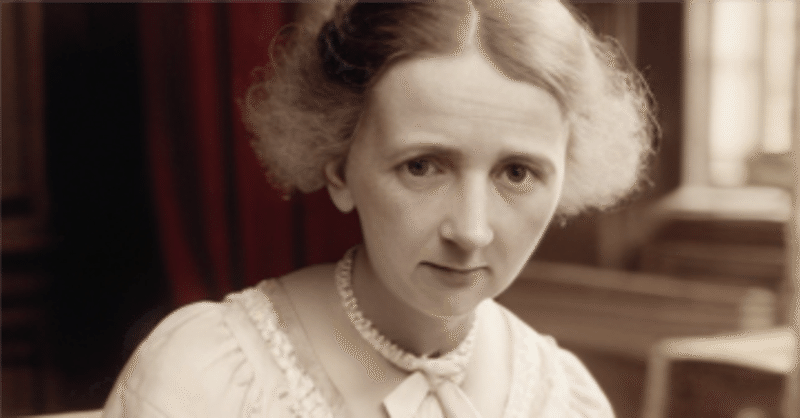
1. Marie S. Curie (1867-1934)
1. Marie S. Curie (1867-1934)
Marie was born on November 7, 1867 in Warsaw, Poland, a country that had been subdivided between
Three nations for nearly a century. Her parents were very patriotic toward their roots, and for this reason,
They were persecuted by their Russian rulers.
When she was ten, Marie was devastated by her mother's death because of difficulties with tuberculosis.
Even so, her studies did not suffer at all. She was a star student in her class. According to Marie,
Mathematics and physics were simple for her to grasp. Her father was always willing to help her because he especially loved science.
Marie made a promise to her sister, Bryana, to help pay for medical school. Realizing that she wasn’t saving enough money, she hired herself out as a governess. During the years as governess, she continued her studies privately in preparation for her future. Later, her father got a better job, enabling him to support both his daughters financially.
Marie needed experience in the laboratory. So, her cousin arranged for her to study an intensive chemistry course with a colleague of his in the evenings and on Sundays. She was able to work on experiments in the laboratory, more often failing than not, until finally, she was ready to enter the university.
She went to Paris to enter the Sorbonne in 1891. At first, she found that her mathematics, science, and technical French were not at sufficient levels needed to work in the classroom. Yet, with a strong determination not to fail, Marie worked hard to improve and even gained a scholarship to continue studies in the university there. About the same time, she met Pierre Curie, her senior of about ten years.
They fell in love and were married in July 1895. She had two children and her career in science.
Around the time of the discovery of the X-ray, uranium rays were also discovered. Initially, uranium rays were discovered accidentally by French physicist, Henri Becquerel. He observed the constancy of rays emitted by uranium regardless of various conditions. However, he largely ignored the finding. Marie, on the other hand, was intrigued and followed up with groundbreaking studies. Going beyond the work of Becquerel, Marie formulated the hypothesis, "the emission of rays by uranium compounds could be an atomic property of the element uranium ----- something built into the very structure of its atoms." Later, she found similar qualities in thorium. She coined the word “radioactivity” to describe the behavior of Uranium.
Marie was a pioneer in science as well as a pioneer for women. She proved that a woman could "keep up with the boys" in the "man's world" of science and was respected for it. Discrimination was once again defeated in a world that loves an underdog and a winner.
Scientists of the day tried to ignore her work because she was a woman. However, at the insistence of Swedish mathematician, Mittag-Leffler, Marie was included in the 1903 Prize as the first woman to win a Prize. She (and her husband) divided the Nobel Prize in Physics with Becquerel for their studies in
Spontaneous radiation. In 1906, she assumed the chair of her deceased husband, as Professor of General Physics in the Faculty of Sciences. She was the first woman to do so at Sorbonne. In 1911, she received the Nobel Prize in Chemistry for her work in radioactivity.
マリー・スキョドフスカ・キュリー(1867年-1934年)は、ポーランドのワルシャワで1867年11月7日に生まれました。彼女の出生国はほぼ100年間、3つの国に分割されていました。彼女の両親は自国に非常に愛着を持っており、そのためロシアの支配者から迫害されました。
10歳のとき、マリーは結核の困難なために母親が亡くなったことで打ちのめされました。それでも彼女の学業は全く苦しみませんでした。彼女はクラスでのトップの生徒でした。マリーによれば、数学と物理学は彼女にとって理解しやすいものでした。彼女の父親は科学が特に好きだったため、彼女を助けることを常に喜んでいました。
マリーは医学校の学費を手伝うために妹のブランヤに約束しました。しかし、十分なお金を貯めていないことに気付いた彼女は、家庭教師として雇われました。家庭教師としての数年間、彼女は将来に備えてプライベートで勉強を続けました。後に、父親がより良い仕事に就き、両親ともに娘たちを経済的に支援できるようになりました。
マリーは実験室での経験が必要でした。そこで、彼女のいとこが彼女を夕方や日曜日に同僚とともに化学の集中コースを受講するよう手配しました。彼女は実験室での実験を行い、しばしば失敗したことで、最終的に大学に入る準備が整いました。1891年にパリに行き、ソルボンヌ大学に入学しました。最初は、数学、科学、技術的なフランス語が教室で働くのに十分なレベルにないことに気付きました。しかし、失敗したくないという強い決意のもと、マリーは努力して向上し、さらにそこでの学業を続ける奨学金も得ました。同じ頃、彼女は約10歳年上のピエール・キュリーと出会いました。彼らは恋に落ち、1895年7月に結婚しました。彼女には2人の子供と科学のキャリアがありました。
X線の発見の頃に、ウランの放射線も発見されました。最初、ウランの放射線はフランスの物理学者アンリ・ベクレルによって偶然発見されました。彼は、さまざまな条件に関係なくウランが放射する光線の一貫性を観察しました。しかし、彼はこの発見を大部分無視しました。一方、マリーは興味を持ち、画期的な研究を行いました。ベクレルの仕事を超えて、マリーは「ウラン化合物による光線の放出は、ウランの元素の原子構造の中に組み込まれている可能性がある」という仮説を立てました。後に、彼女はトリウムでも同様の特性を見出しました。彼女はウランの挙動を説明するために「放射能」という言葉を造語しました。
マリーは科学のパイオニアであり、女性のパイオニアでもありました。彼女は科学の「男の世界」で男たちに引けを取らないことを証明し、そのために尊敬されました。当時の科学者たちは、彼女が女性であるために彼女の仕事を無視しようとしました。しかし、スウェーデンの数学者ミッタグ=レフラーの要請により、マリーは1903年の賞で初めて女性として受賞しました。彼女(と夫)は、自発放射線の研究に関してベクレルと共にノーベル物理学賞を分け合いました。1906年に、彼女は夫が亡くなった後の一般物理学教授としてソルボンヌ大学の理学部の教授に就任しました。彼女はソルボンヌでそうする最初の女性でした。1911年に、彼女は放射性物質の研究に対して化学のノーベル賞を受賞しました。
この記事が気に入ったらサポートをしてみませんか?
